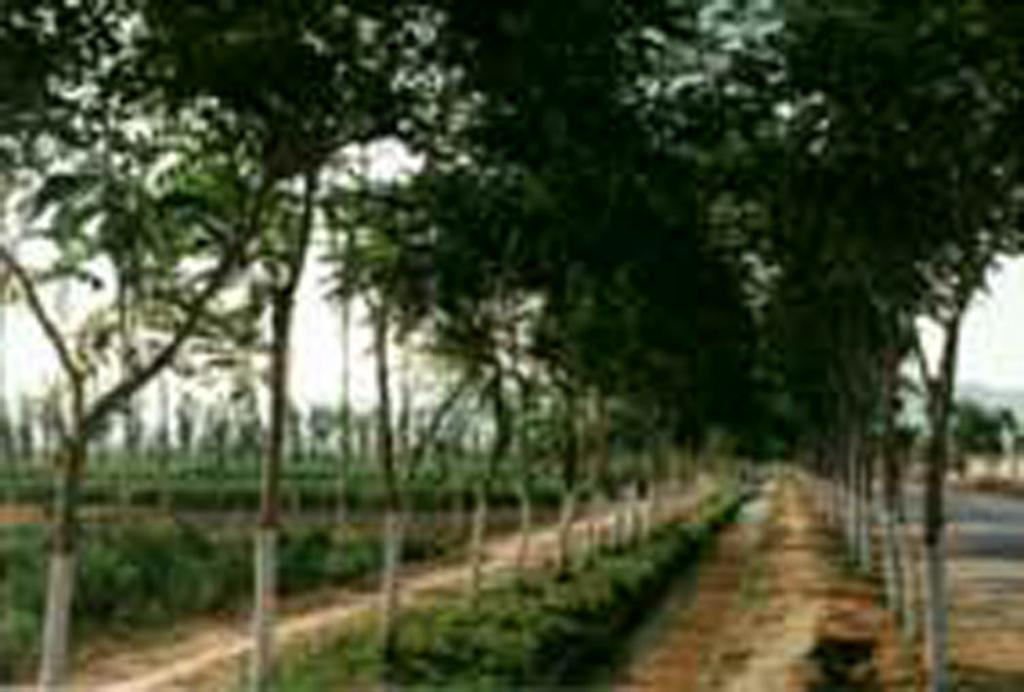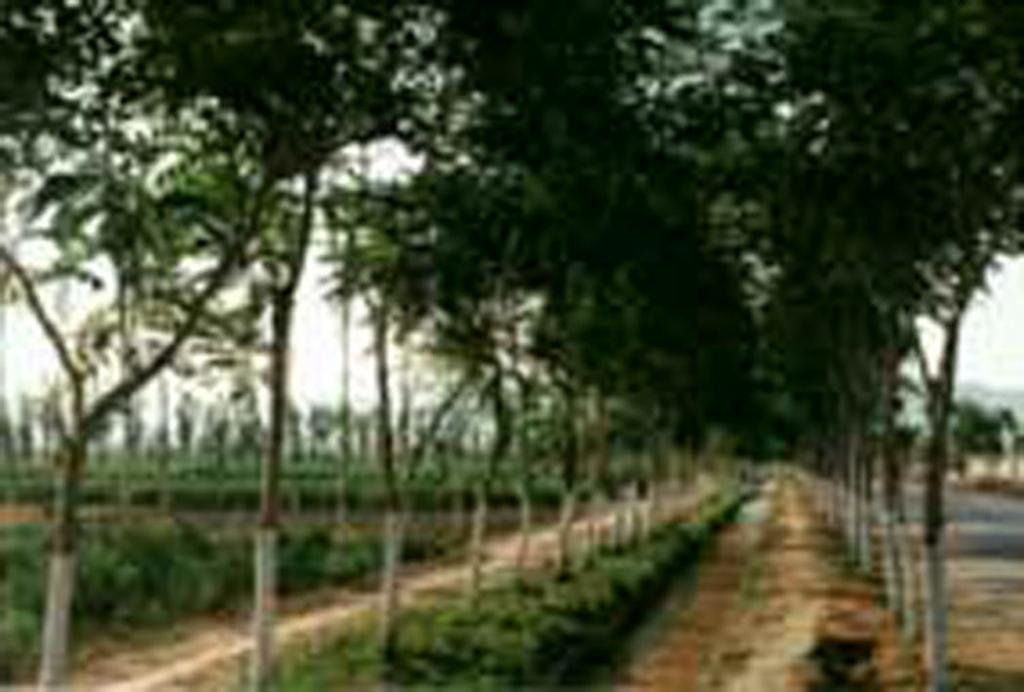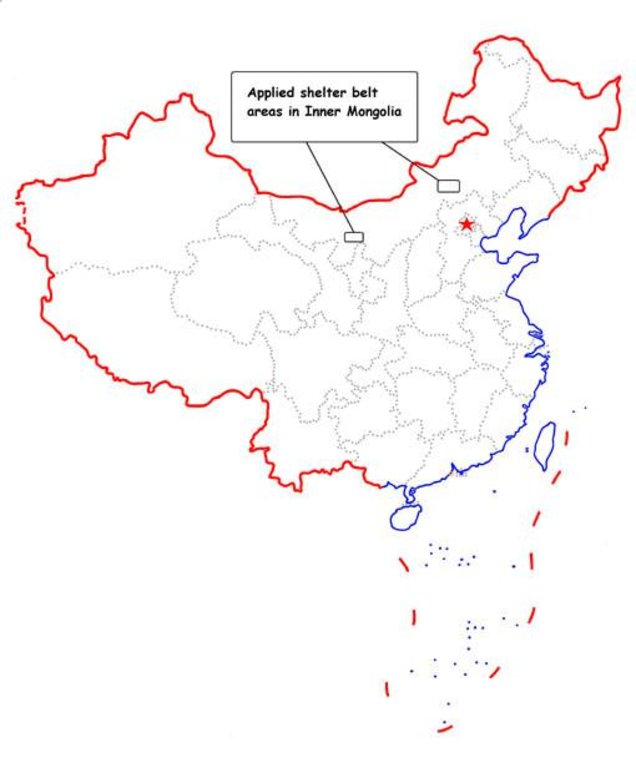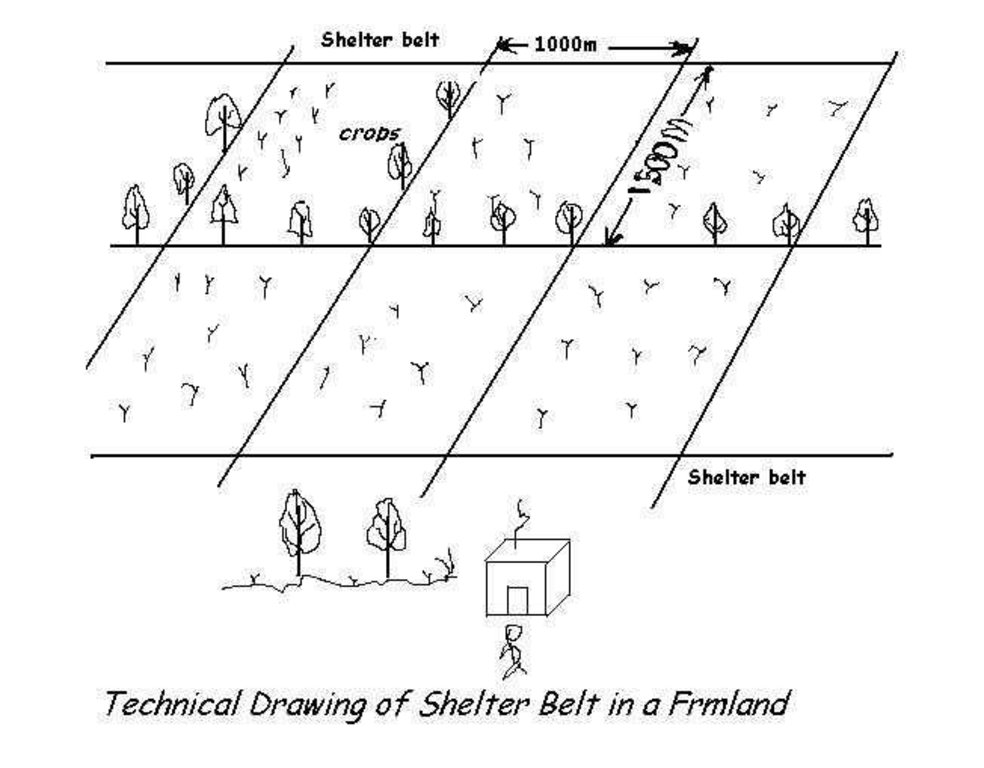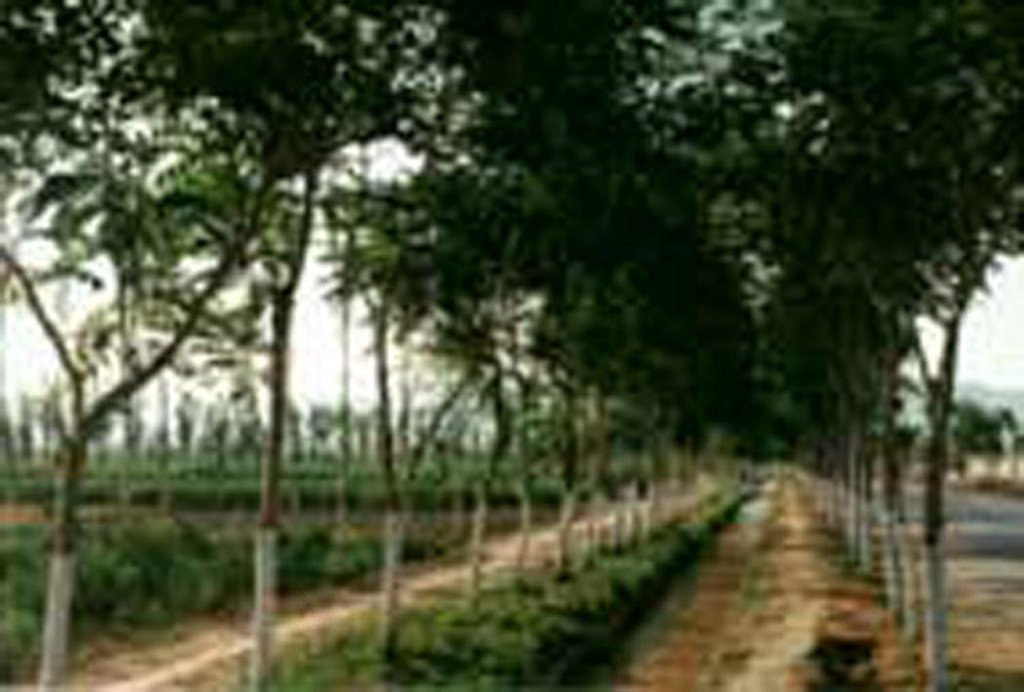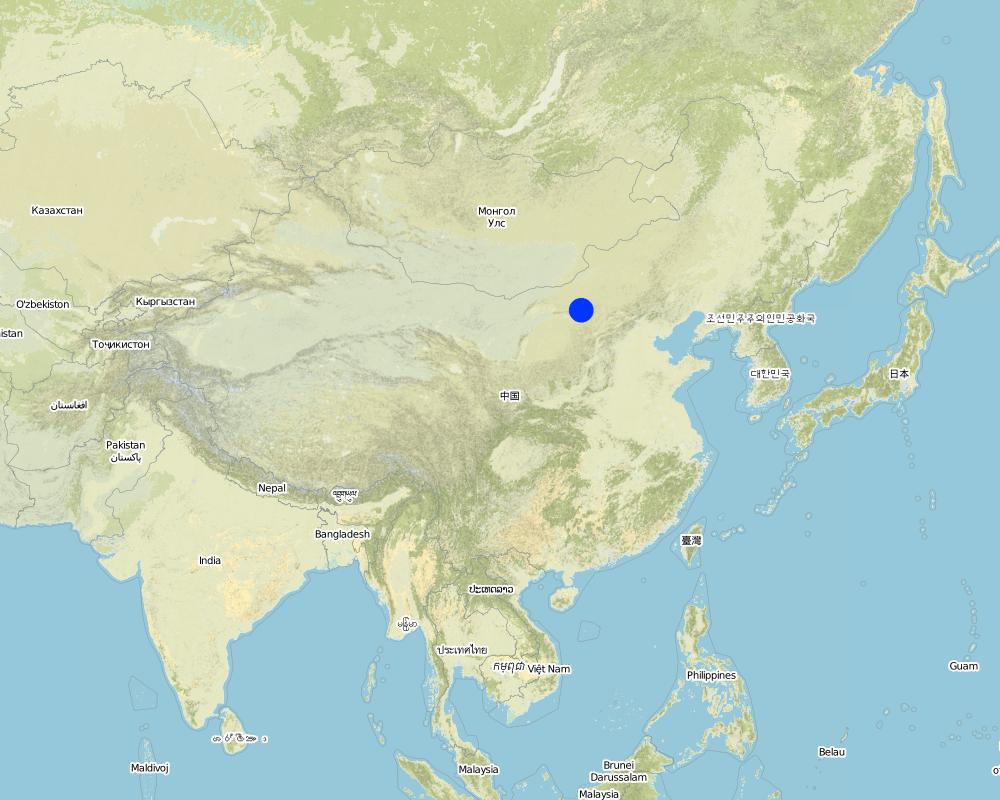Shelter Belt [Китай]
- Создание:
- Обновить:
- Составитель: Meili WEN
- Редактор: –
- Рецензент: David Streiff
approaches_2396 - Китай
Просмотреть разделы
Развернуть все Свернуть все1. Общая информация
1.2 Контактные данные специалистов и организаций, участвующих в описании и оценке Подхода
Название организации (-ий), содействовавших документированию/оценке Подхода (если применимо)
Department of Resources and Environmental Science, Beijing Normal University (Department of Resources and Environmental Science, Beijing Normal University) - Китай1.3 Условия, регламентирующие использование собранных ВОКАТ данных
Составитель и ответственный/-ые специалист(-ы) согласны с условиями, регламентирующими использование собранных ВОКАТ данных:
Да
1.4 Ссылка (-и) на Анкету (-ы) по Технологиям УЗП
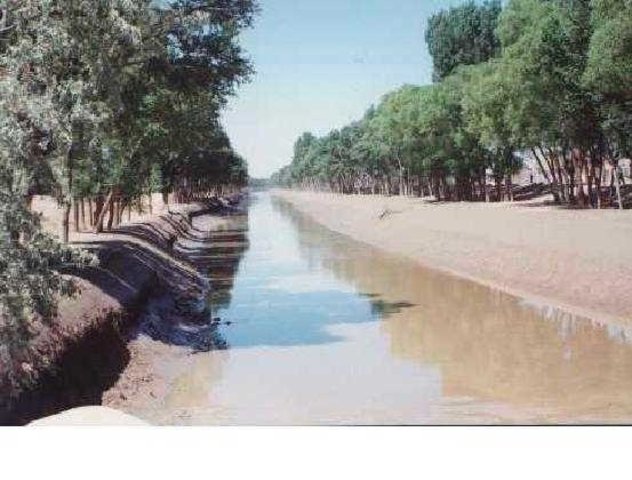
Shelterbelts for farmland in sandy areas [Китай]
Belts of trees, planted in a rectangular grid pattern or in strips within, and on the periphery of, farmland to act as windbreaks.
- Составитель: Meili WEN
2. Описание Подхода УЗП
2.1 Краткое описание Подхода
The shelter belt is a strip or a row of trees planted in a farmland as a wind barrier to protect crops and reduce wind erosion.
2.2 Подробное описание Подхода
Подробное описание Подхода:
Aims / objectives: Overall purposes are improving environment, and then realization sustainable development of agriculture. Specific objectives are decreasing wind erosion of cropland, increasing foodstuff production. When this approach is decided to implement, the first things to be done are to investigate natural and social-economic environment. Then scope and stages of implementation are decided by government with provision of capital and policies. After that, the approach need to propagandize to people who live in the project area. To implement this approach step by step, local government and land users play an very important role in implementation of the approach.
2.3 Фотографии, иллюстрирующие Подход
2.5 Страна/ регион/ место, где применялся Подход
Страна:
Китай
Административная единица (Район/Область):
Inner Mongolia
Комментарии:
The data is from: Inner Mongolia forest department. Inner Mongolia autonomy region forest statistic data, 1987, p75.
Map
×2.6 Даты начала и окончания реализации Подхода
Год начала реализации:
1960
Год окончания (Если Подход больше не применяется):
1981
2.7 Тип Подхода
- в рамках проекта/ программы
2.8 Каковы цели/ задачи Подхода
The Approach focused mainly on SLM with other activities (Modulation of air temperature, purifying air and increasing oxygen.)
The main objectives of the approach were reducing wind speed and keep soil moisture so as to be sustainable development of local land resources.
The SLM Approach addressed the following problems: Serious wind erosion in the farmland, and poor land management.
2.9 Условия содействующие применению Технологии/ Технологий в рамках Подхода или затрудняющие его
Наличие/ доступность финансовых ресурсов и услуг
- затрудняют
No enough money
Treatment through the SLM Approach: Raising funds from different level of government
Нормативно-правовая база (землевладение, права на земле- и водопользование)
- затрудняют
Lack of enforcement of legislation
Treatment through the SLM Approach: Enforcement of legislation
The existing land ownership, land use rights / water rights moderately hindered the approach implementation Persuading land users to accept this SWC approach.
3. Участие и распределение ролей заинтересованных сторон
3.1 Заинтересованные стороны, участвующие в реализации Подхода и их роли
- местные землепользователи/ местные сообщества
Mongolian, Moslem, Korean minority nationalities, etc
Work equally divided between men and women
- эксперты по УЗП/ сельскому хозяйству
A group of national and international specialists have been studying for a long time, and summarized this approach.
- государственные власти (отвечающие за планирование или принятие решений)
The implementing agencies are national government
3.2 Участие местных землепользователей/ местных сообществ на разных стадиях реализации Подхода
| Участие местных землепользователей/ местных сообществ | Перечислите участников и опишите их вовлеченность | |
|---|---|---|
| инициирование/ мотивация | самоорганизация | public meetings; They were involved in approach by public meeting and understood the approach. |
| планирование | интерактивное | ublic meetings; They involved approach by public meeting and understand the approach |
| выполнение | самоорганизация | casual labour; They increased their income by participating casual labour |
| мониторинг/ оценка | интерактивное | interviews/questionnaires; They pronounced their point of view by interviews or questionnaires |
| Research | интерактивное | They do not participate in. |
3.4 Принятие решений по выбору Технологии/ Технологий УЗП
Укажите, кто принимал решение по выбору применяемой Технологии/ Технологий:
- политики/ руководители
Поясните:
consultative.
Decisions on the method of implementing the SLM Technology were made by mainly by SLM specialists with consultation of land users. directive (top-down).
4. Техническая поддержка, повышение компетенций и управление знаниями
4.1 Повышение компетенций/ обучение
Проводилось ли обучение землепользователей/ других заинтересованных лиц?
Нет
4.2 Консультационные услуги
Есть ли у землепользователей возможность получать консультации?
Да
Укажите, где именно оказываются консультационные услуги:
- на полях землепользователей
Описание/ комментарий:
On-the-job, farm visits, demonstration areas; Key elements: Quality of on-the-job, Effect of farm visits, Quality of demonstration areas; 1) Advisory service was carried out through: projects own extension structure and agents 2) Advisory service was carried out through: projects own extension structure and agents; Extension staff: mainly government employees 3) Target groups for extension: technicians/SWC specialists; Activities: Courses and demonstration
Advisory service is quite adequate to ensure the continuation of land conservation activities; All land users want to do this approach if they could get economic benefit from it. At each government level, there is a SWC division which is in charge of SWC activities including extension.
4.3 Институциональная (организационная) поддержка
В ходе реализации Подхода были ли организованы новые институциональные структуры или поддержаны уже существующие?
- да, умеренно
Укажите уровень, на котором структуры были укреплены или вновь созданы:
- местные
Укажите тип поддержки:
- финансовая
4.4 Мониторинг и оценка
Являются ли мониторинг и оценка частью Подхода?
Да
Комментарии:
bio-physical aspects were regular monitored by 0 through measurements; indicators: None
technical aspects were regular monitored by 0 through measurements; indicators: None
socio-cultural aspects were ad hoc monitored by 0 through observations; indicators: None
economic / production aspects were ad hoc monitored by 0 through measurements; indicators: None
area treated aspects were regular monitored by 0 through measurements; indicators: None
no. of land users involved aspects were ad hoc monitored by 0 through measurements; indicators: None
management of Approach aspects were ad hoc monitored by 0 through observations; indicators: None
There were few changes in the Approach as a result of monitoring and evaluation: Improving the approach according to the practical effect.
4.5 Научные исследования
Были ли научные исследования частью Подхода?
Да
Укажите темы исследований:
- экономика / маркетинг
- экология
Напишите подробнее и назовите тех, кто выполнял исследования:
This approach is applied for improving environment so as to relief their poverty.
Research was carried out on station
5. Финансирование и внешняя материальная поддержка
5.1 Годовой бюджет мероприятий по УЗП в рамках Подхода
Если точный годовой бюжет неизвестен, укажите примерный диапазон затрат:
- 10000-100000
Комментарий (например, основные источники финансирования/ ключевые доноры):
Approach costs were met by the following donors: international (-): 25.0%; government (national): 55.0%; international non-government (-): 7.0%; national non-government (-): 3.0%; local community / land user(s) (-): 10.0%
5.2 Финансирование и внешняя материальная поддержка, предоставляемая землепользователям
Предоставлялась ли землепользователям финансовая/ материальная поддержка для применения Технологии /Технологий?
Да
5.3 Субсидии на отдельные затраты (включая оплату труда)
- оборудование
| Укажите, какие ресурсы были субсидированы | В какой степени | Опишите субсидии подробнее |
|---|---|---|
| техника | профинансированы полностью | |
| инвентарь/ инструменты | профинансированы полностью | |
- сельскохозяйственные
| Укажите, какие ресурсы были субсидированы | В какой степени | Опишите субсидии подробнее |
|---|---|---|
| семена | профинансированы полностью | |
| удобрения | профинансированы полностью | |
| seedlings and biocides | профинансированы полностью | |
- инфраструктура
| Укажите, какие ресурсы были субсидированы | В какой степени | Опишите субсидии подробнее |
|---|---|---|
| community infrastructure | профинансированы полностью | |
Если труд землепользователя был существенным вкладом, укажите, был ли этот вклад:
- за денежное вознаграждение
Комментарии:
Daily salary and materials as well as tools etc.
5.4 Кредитование
Предоставлялись ли в рамках Подхода кредиты на мероприятия УЗП?
Да
Укажите условия предоставления (процент, окупаемость и т.д.):
Interest rate charged: 0.8%; repayment conditions: Varying every year, repayment is 5 years or 10 years..
Interest was lower than market rate.
6. Анализ влияния и заключительные положения
6.1 Влияние Подхода
Сумел ли Подход помочь землепользователям внедрить и поддерживать технологии УЗП?
- Нет
- Да, немного
- Да, умеренно
- Да, существенно
This approach has little relationship to improve soil and water management.
Сумел ли Подход разрешить правовые проблемы землевладения/ землепользования, препятствующие использованию технологий УЗП?
- Нет
- Да, немного
- Да, умеренно
- Да, существенно
The policies of land contract distribute land to individuals so that land users who involved in SWC activities need to be organized together for implementation of the SWC. The organization need much time and hard work.
Did other land users / projects adopt the Approach?
- Нет
- Да, немного
- Да, умеренно
- Да, существенно
A comprehensive SWC technology/approach has been formed based on the single measure such as shelter belt, terrace, check dams involved in agricultural development.
6.3 Долгосрочная устойчивость мероприятий в рамках Подхода
Могут ли землепользователи самостоятельно (без внешней поддержки) продолжать применение того, что было реализовано в рамках Подхода?
- нет уверенности
Если нет или нет уверенности, объясните почему:
If there are not support from outside, land users couldn't will implement SWC approach.
6.4 Сильные стороны/ преимущества Подхода
| Сильные стороны/ преимущества/ возможности по мнению землепользователей |
|---|
| Increasing their income (How to sustain/ enhance this strength: Increasing propagandizing and education about SWC knowledge.) |
| Сильные стороны/ преимущества/ возможности по мнению составителя или других ключевых специалистов |
|---|
| Improving agricultural production conditions. (How to sustain/ enhance this strength: Reinforcing management to this approach) |
| Increasing the land users' income (How to sustain/ enhance this strength: Changing part cropland to cash crops or fuit trees so as to get much return and maintain the sustainable SWC approach.) |
6.5 Слабые стороны/ недостатки Подхода и пути их преодоления
| Слабые стороны/ недостатки/ риски по мнению землепользователей | Возможные пути их преодоления/снижения? |
|---|---|
| Poor mamagement after the shelter belt construction. | Enhancing management of village communities forbidding deforest. |
| Слабые стороны/ недостатки/ риски по мнению составителя или ответственных специалистов | Возможные пути их преодоления/снижения? |
|---|---|
| Cost much money and more labour forces | The government should increase fund to implement this kind of approach. |
7. Справочные материалы и ссылки
7.1 Методы сбора/источники информации
- данные, собранные из отчетов и достоверных документов
7.2 Ссылки на опубликованные материалы
Название, автор, год публикации, ISBN:
China atlas.China atlas publishing house, 1999, p25.
Где опубликовано? Стоимость?
Library of the Department of Resource and Environmental Science, Beijing Normal University.
Название, автор, год публикации, ISBN:
Zhao Yu,Jing Zhengping, Shi Peijun, Hao Yunchong et al.Inner Mongolia soil erosion research remote sensing was used in Inner Mongolia soil erosion research,Science publishing house,1989, p25.
Где опубликовано? Стоимость?
Library of the Department of Resource and Environmental Science, Beijing Normal University.
Название, автор, год публикации, ISBN:
Inner Mongolia forest department, Forest work manual,1998,12, p33-34, p67
Где опубликовано? Стоимость?
Library of the Department of Resource and Environmental Science, Beijing Normal University.
Название, автор, год публикации, ISBN:
Synthesized investigate team in Inner Mongolia-Ningxia, CAS.West of northeast Forest in Inner Mongolia autonomy region, Science publishing house,1981, p82-101.
Где опубликовано? Стоимость?
Library of the Department of Resource and Environmental Science, Beijing Normal University.
Название, автор, год публикации, ISBN:
Sun Jinzhu. Natural condition and reconstruct in Hetao plain,Inner Mongolia people's publishing house,1976, p188-189.
Где опубликовано? Стоимость?
Library of the Department of Resource and Environmental Science, Beijing Normal University.
Название, автор, год публикации, ISBN:
Inner Mongolia forest Department. Inner Mongolia autonomy region forest statistic data,1987, p75.
Где опубликовано? Стоимость?
Library of the Department of Resource and Environmental Science, Beijing Normal University.
Название, автор, год публикации, ISBN:
Hu Chun(chief editor). Inner Mongolia autonomy region climate resources about agriculture, forest and animal husbandry, Inner Mongolia people's publishing house, 1984, p45-47.
Где опубликовано? Стоимость?
Library of the Department of Resource and Environmental Science, Beijing Normal University.
Название, автор, год публикации, ISBN:
Water and soil conservation bureau, Yellow River irrigation works committee of Department of water and electricity. Water and soil conservation economy benefit thesis collecting,1987, p45-47.
Где опубликовано? Стоимость?
Library of the Department of Resource and Environmental Science, Beijing Normal University.
Название, автор, год публикации, ISBN:
Sun Jinzhu,Chen Shan(chief editor). Inner Mongolia environmental alarm beforehand and repair countermeasure. Inner Mongolia people's publishing house,1994, p132.
Где опубликовано? Стоимость?
Library of the Department of Resource and Environmental Science, Beijing Normal University.
Ссылки и модули
Развернуть все Свернуть всеСсылки

Shelterbelts for farmland in sandy areas [Китай]
Belts of trees, planted in a rectangular grid pattern or in strips within, and on the periphery of, farmland to act as windbreaks.
- Составитель: Meili WEN
Модули
Нет модулей


